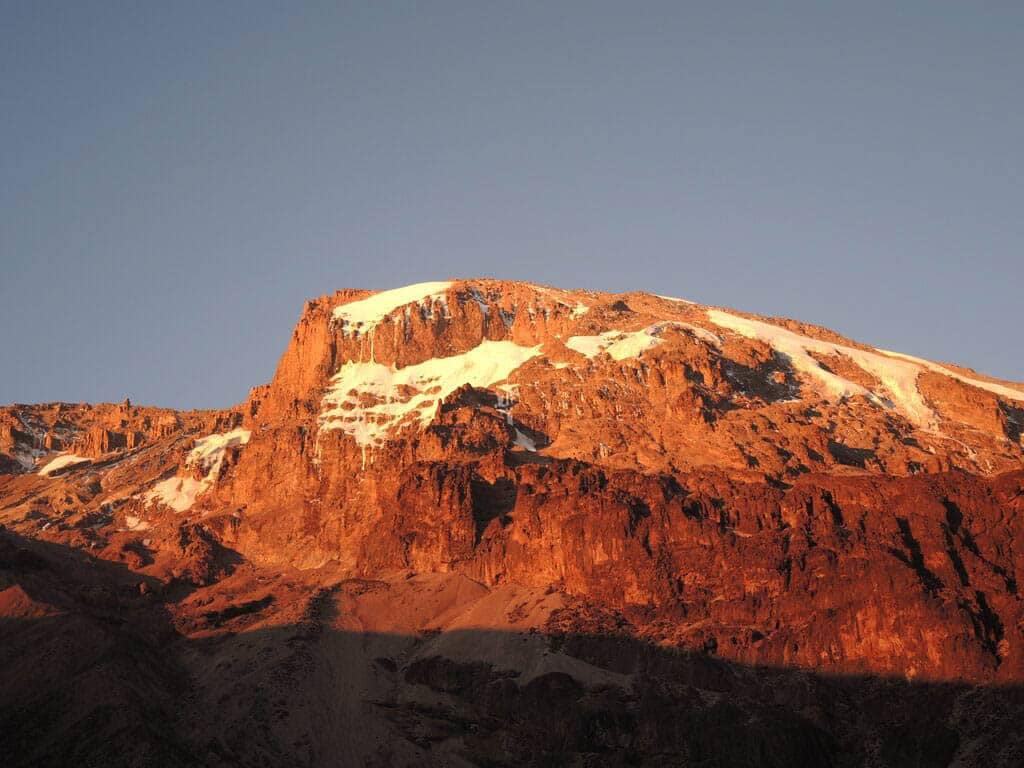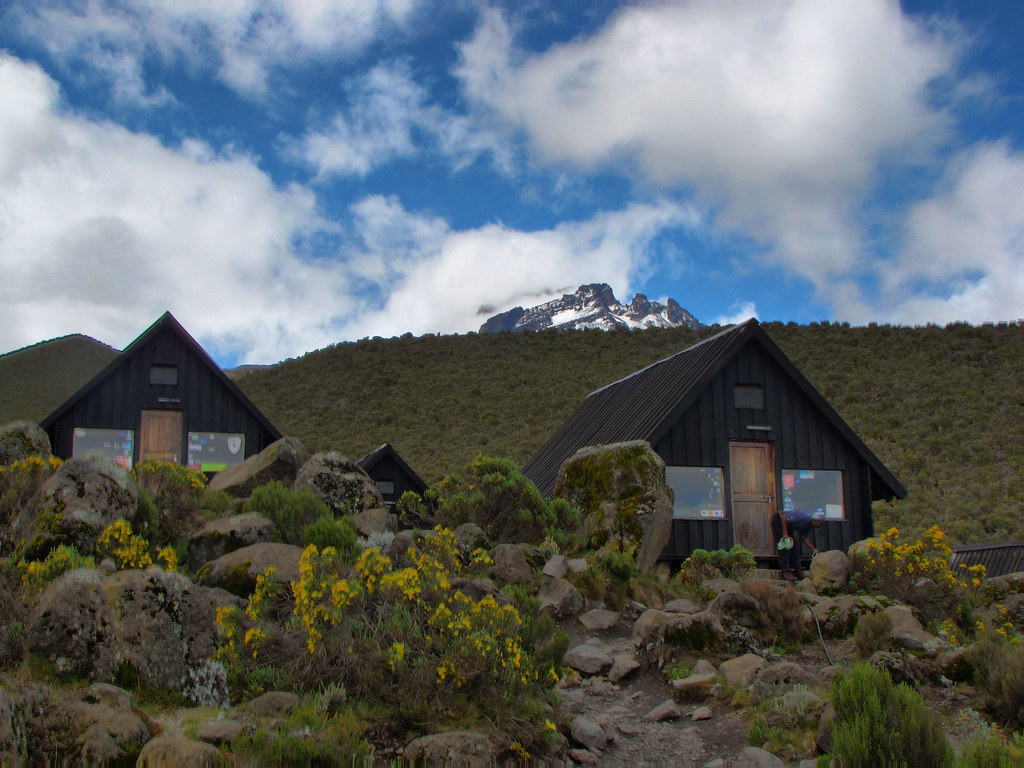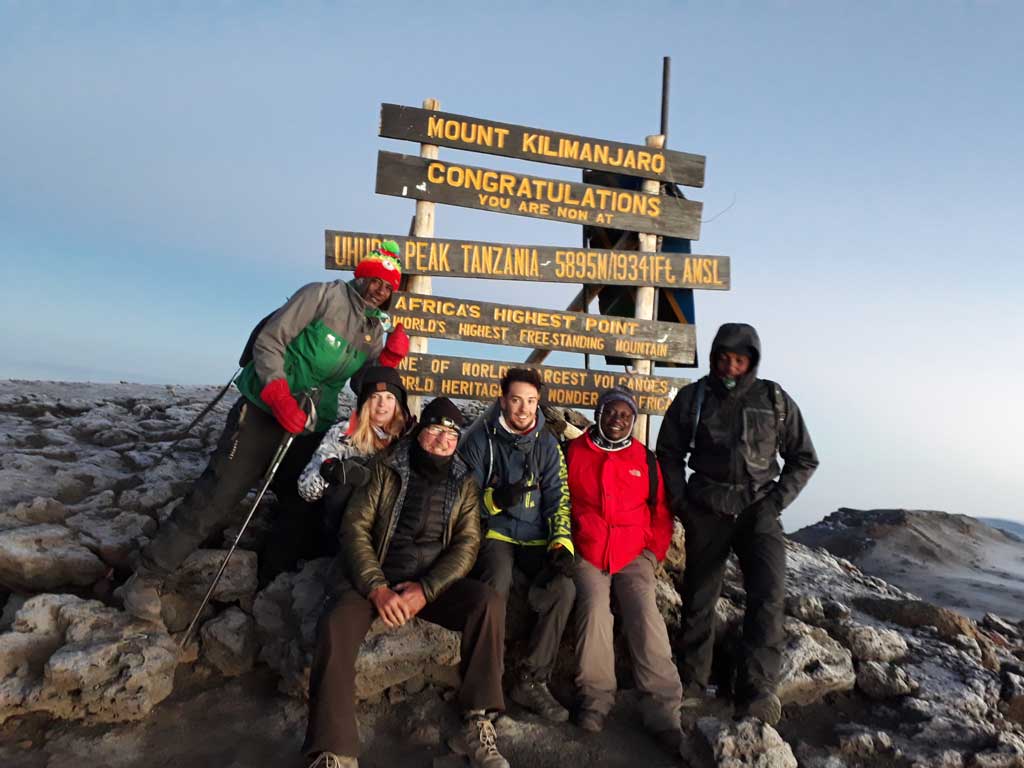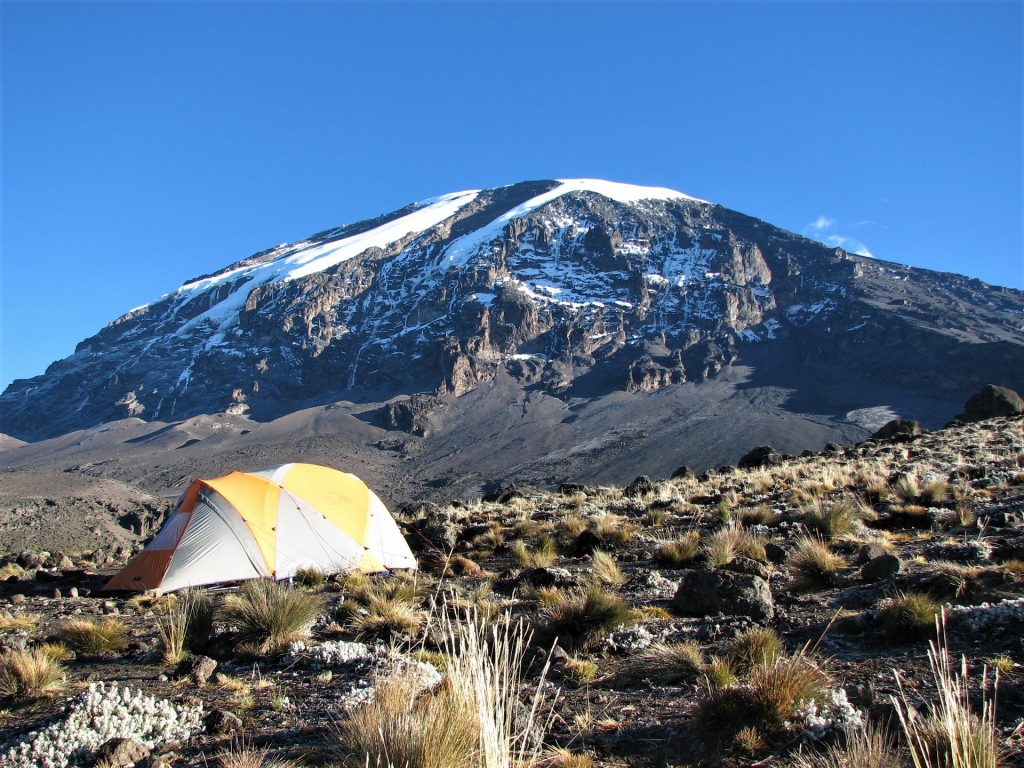Rongai Route
- Home
- Contact us
6 days 5 nights
The Rongai Route is one of Kilimanjaro’s easiest routes, and it has very few people on it. The typical typical duration for this trip is 6 days. However, you can also add an addditional acclimatization day and make it a 7 – day trek.
Itinerary:
Day 1:
Arrive at the Kilimanjaro International Airport. You will be met at the airport and transferred to the Hotel in Arusha / Moshi.
Your day starts early with breakfast and a briefing. Transfer by Land Rover through many villages and coffee plantations for 4-5 hours to the attractive wooden village of Nale Muru (1,950 m/6,398 ft). After signing in and preparing the porters, you begin the hike on a wide path winding through fields of maize and potatoes, then enter pine forest. You then start to climb gently but consistently through attractive forest that shelters a variety of wildlife. The forest begins to thin and Simba Camp (2,600 m/8,530 ft) is near the “First Cave” at the edge of the moorland zone with extensive views over the Kenyan plains.
Day 2:
Your morning walk is a steady ascent up to the Second Cave. En route, you will enjoy superb views of Kibo and the eastern ice fields on the crater rim.
Day 3:
Your continuing steady ascent takes you up to the Third Cave. Closer now, the eastern ice fields on the crater rim continue to draw you upwards. On this day, be careful to notice any signs of altitude sickness.
Day 4:
Today, you hike up to the Kibo Huts at the bottom of the Kibo crater wall, and this is where you join the popular Marangu Route. Plan on doing your hike early in the day, then resting in preparation for your final ascent. Prepare your equipment and warm clothing for your summit climb, then turn in early.
Day 5:
Wake at midnight to a light breakfast, then prepare for your summit ascent. The goal is to climb before dawn so that you can reach Uhuru Peak shortly after sunrise. Leave at 1 AM, switchback up steep scree or possibly snow, and reach Gilman’s Point on the crater rim at 5,861 m/18,640 ft between 5 and 7 AM. Here, views of the fabled crater and its icecaps greet you. Another 2 hours of hiking along the crater rim near the celebrated snows takes you to Kilimanjaro’s true summit, Uhuru Peak, by 9 AM. This is Africa’s highest point, and you would have to travel more than 3,000 miles toward the Himalayas to find a higher peak! Be sure to have your picture taken at the summit to show your friends. After your summit stay, descend back to the Kibo Huts, have lunch, rest, collect your things, and re cross the saddle to the Horombo Huts. Eat dinner and get some well-deserved sleep!
You do the beginning of this climb in the dark with headlamps or flashlights. It will be very cold until you start descending, so you will need all of your warm layers. This is, by far, the most difficult part of the trek. Slowly slowly, or, “pole pole,” and an optimistic attitude will get you there!
Day 6:
Wake as usual, pack, and descend through the moorland to the Mandara Huts. Have lunch there then continue your triumphant recessional down through lush forest to the park gate, which you should reach around 2 or 3 PM. Remember to tip your guides cooks and porters, since you will be leaving them here. A vehicle will take you back to the Springlands Hotel or similar hotel in Moshi, where it is definitely time for celebration! Depart for the airport or other destinations in Tanzania or Kenya. A trip to the beaches at Zanzibar is a good way to recuperate. We can arrange many reasonably priced trips and safaris around Moshi and the Kilimanjaro region.
Book this Trip
Location Map
Mount Kilimanjaro Routes
Kilimanjaro is a mountain in Tanzania. It is so much more than simply the highest peak on the African continent and the world’s tallest free-standing mountain.
For many, it is the ultimate once-in-a-lifetime personal challenge – a difficult but rewarding experience.
Kilimanjaro’s famed snow-capped mountain rises an astounding 5,895 meters (19,336 feet) above the African lowlands below. It is roughly a 130-kilometer drive from Arusha and is located within the Kilimanjaro National Park, a UNESCO World Heritage Site.
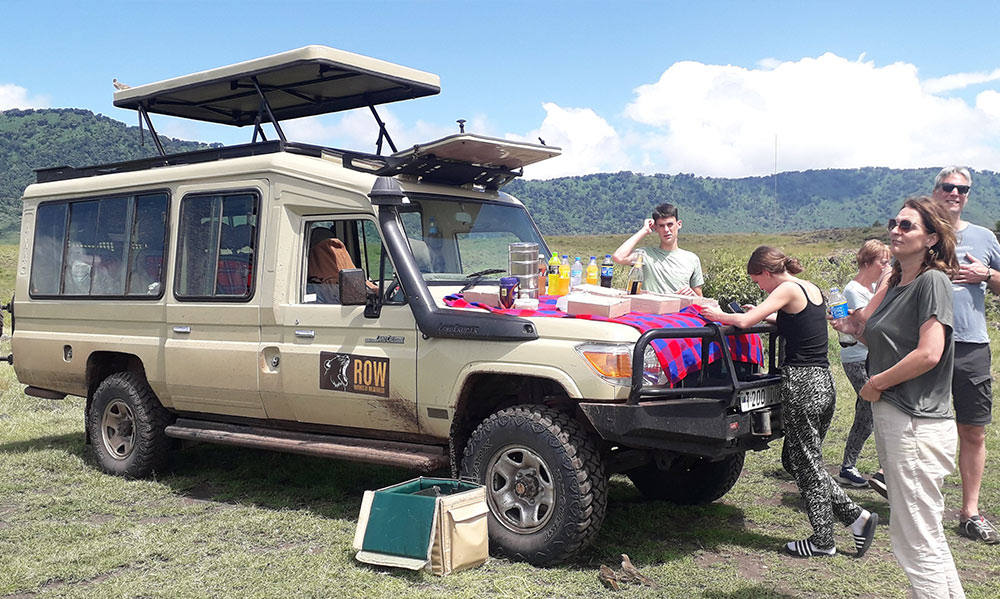
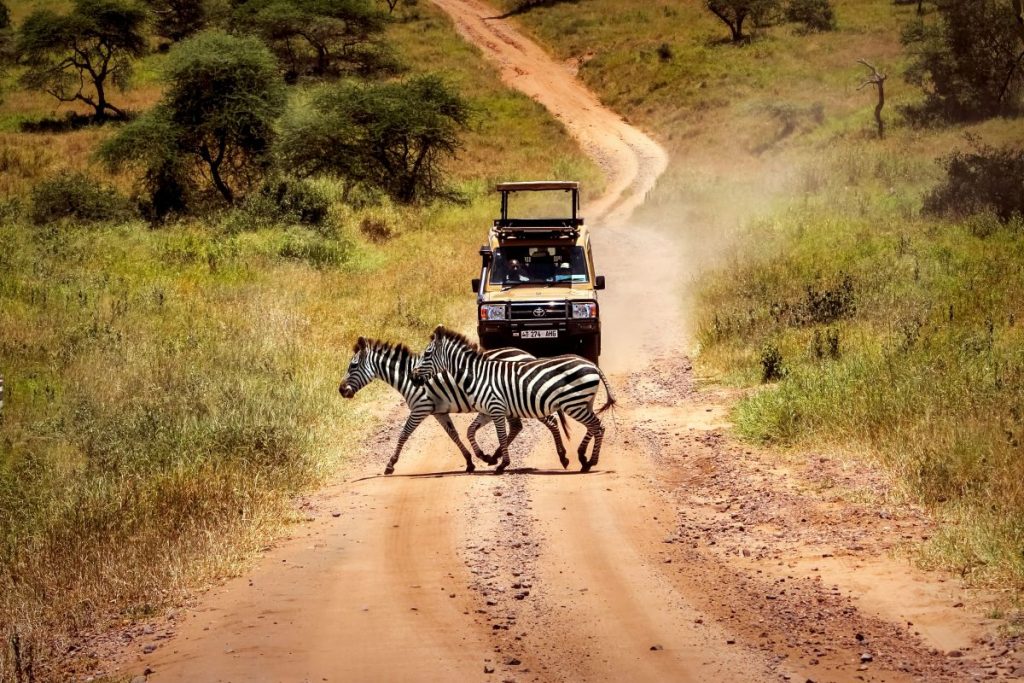
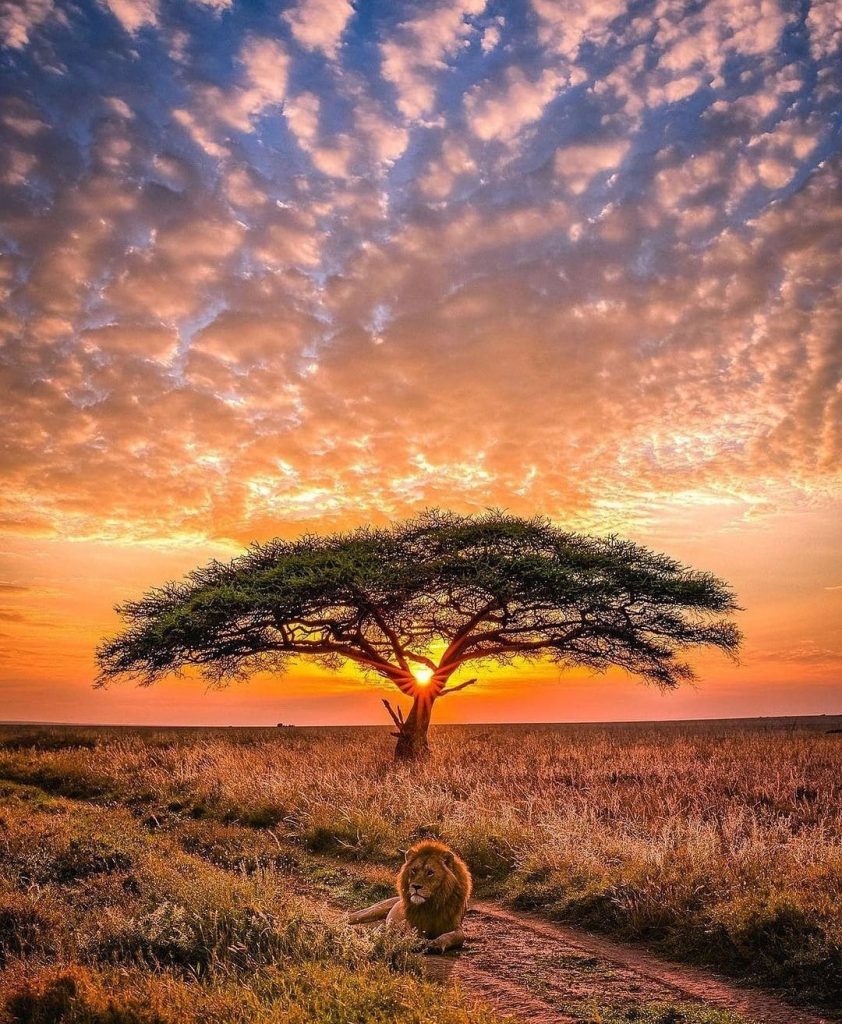
Tanzania #Unforgettable
These are the timeless sights and sounds of the Serengeti, and on Rhymes of Wilderness safari tours, they signal the start of each thrilling day. A safari features the continent’s finest guides, who expertly reveal your destination’s countless wonders.


